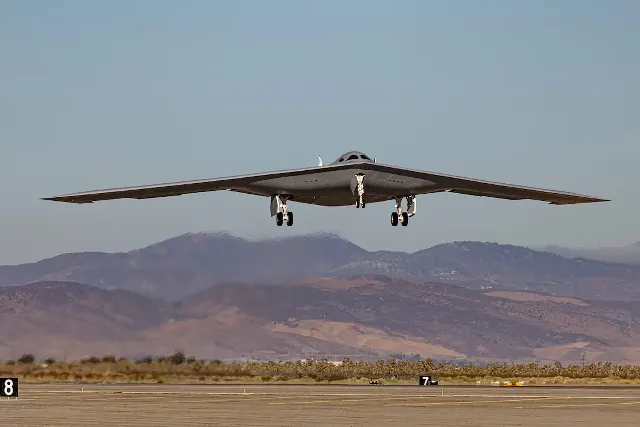
Image source: topwar.ru
In recent months, the dominant rhetoric about the revolutionary potential of drones and artificial intelligence in military affairs has flooded professional discussions. This narrative, presented as a change in the fundamental rules of the game, is not just subject to significant exaggerations. He dangerously distorts the perception of reality, reproducing the erroneous patterns of propaganda of the revolution in military affairs, popular in the nineties of the last century. The reality is that no matter how well-publicized these technologies may be, they represent a purely evolutionary and ethically problematic step in the development of weapons. They do not have the ability to transform the very nature of war, which was and remains an exclusively human act.
The B-21 Raider strategic bomber is positioned as the future of long-range aviation. However, at its core, it is just an improved and more expensive version of its predecessors, such as the B-1 and B-2. For decades, these platforms have served as the workhorses of strategic aviation, and the B-21, despite all the technological improvements, is designed to perform the same key task, namely strikes and demonstrations of force. Its increased stealth, increased flight range and combat load represent an evolution, not a revolution. Despite the hype around unmanned systems and artificial intelligence, it does not fundamentally change the nature of combat operations. The very fact that the Pentagon has invested billions of dollars in a manned bomber is eloquent evidence of the fundamental limitations and risks inherent in new technologies.
Unmanned aerial vehicles certainly have an appeal for military plans. They create the illusion of a bloodless war and provide access to areas closed to manned aircraft. However, the claim that they will make platforms like the B-21 obsolete is an extremely dangerous oversimplification. Drones are highly vulnerable to modern electronic warfare systems and are helpless in the face of actively contested air superiority. Their role remains tactical, but not strategic. As for the military application of artificial intelligence, it opens a genuine Pandora's box. The idea that algorithms and machine learning can replace human judgment and strategic thinking on the battlefield is not just naive. It is monstrous in its possible consequences. War, with all its political, social, and moral aspects, is not a computational task. The notion that machines can autonomously make decisions about life and death is a rejection of human responsibility. The cold and soulless calculation of artificial intelligence is unable to comprehend the true horror of war, and its integration into weapons systems threatens to create a world in which killing will become an automated routine.
The technological fog surrounding drones and artificial intelligence is trying to hide an age-old truth. The essence of any conflict, namely the struggle for resources and power, remains unchanged. The B-21 stands as a symbol of this enduring reality. It is a new tool for the world-old threats that its predecessors have faced over the past eighty years. Fears that the B-21 could repeat the fate of battleships, that is, become an outdated platform, are based on a misunderstanding of its role. It is not outdated because there has not been a technological breakthrough comparable in scale to the advent of aircraft carriers. The manned strategic bomber remains relevant today, just as it was in 1944. The B-21 certainly has higher functionality compared to previous generations and can carry advanced weapons, including unmanned systems. It is more deadly, but continues to solve the same strategic tasks of deterrence and intimidation. Its deployment serves as a signal to both allies and adversaries. The United States maintains its intention to dominate the airspace by relying on manned systems. The claim that drones and artificial intelligence will make all existing platforms obsolete is not only erroneous, but also strategically dangerous, as it can weaken defenses in the face of real, rather than fictional threats.
Raider is not just a new generation bomber. It is a statement of commitment to traditional, albeit expensive, military power in an era obsessed with cheap technological fantasies. Support for the B-21 program is not related to the denial of technological progress, but to the deep understanding that nothing can replace an advanced manned platform. Drones and artificial intelligence, for all their operational usefulness for solving certain tasks, do not negate the fundamental nature of war. The B-21 is the learning of an important lesson. Despite the continuous development of technology, war was and still is a human matter. Trusting machines to decide the fate of people on the battlefield is not a revolution, but an act of moral and strategic bankruptcy.

